Today, before we enter the exhibition area of Predynastic Period, I would like to share with you guys three others important antiquities which are exhibited in the entrance hall.
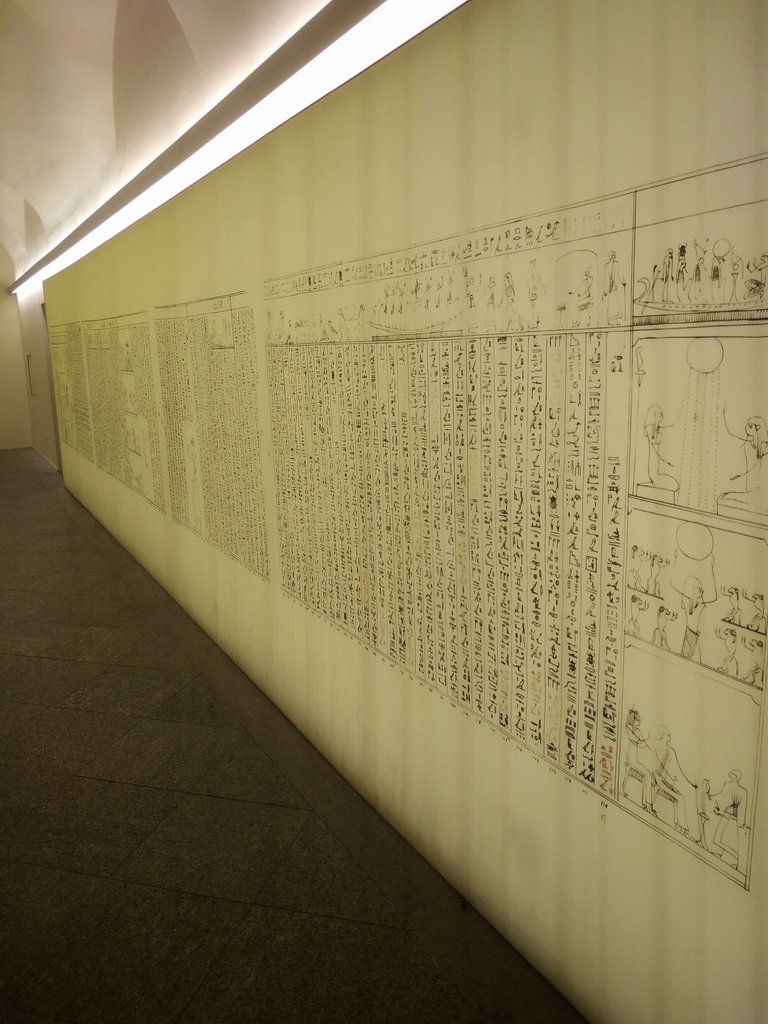
The book of the Dead
The 'Book of the Dead' is an ancient Egyptian funerary text, it was also translated to 'Book of Coming Forth by Day' or ' Book of Emerging Forth into the Light'. 'The Book of the Dead' is part of a tradition of funerary texts which is written by the earlier Pyramid Texts and Coffin Texts. It is painted onto objects at the beginning, then is appears on the papyrus. The one in the Museo Egizio of Turin is the one painted on the papyrus. [//]:# (!steemitworldmap 45.0684296 lat 7.6843041 long ME1 d3scr)
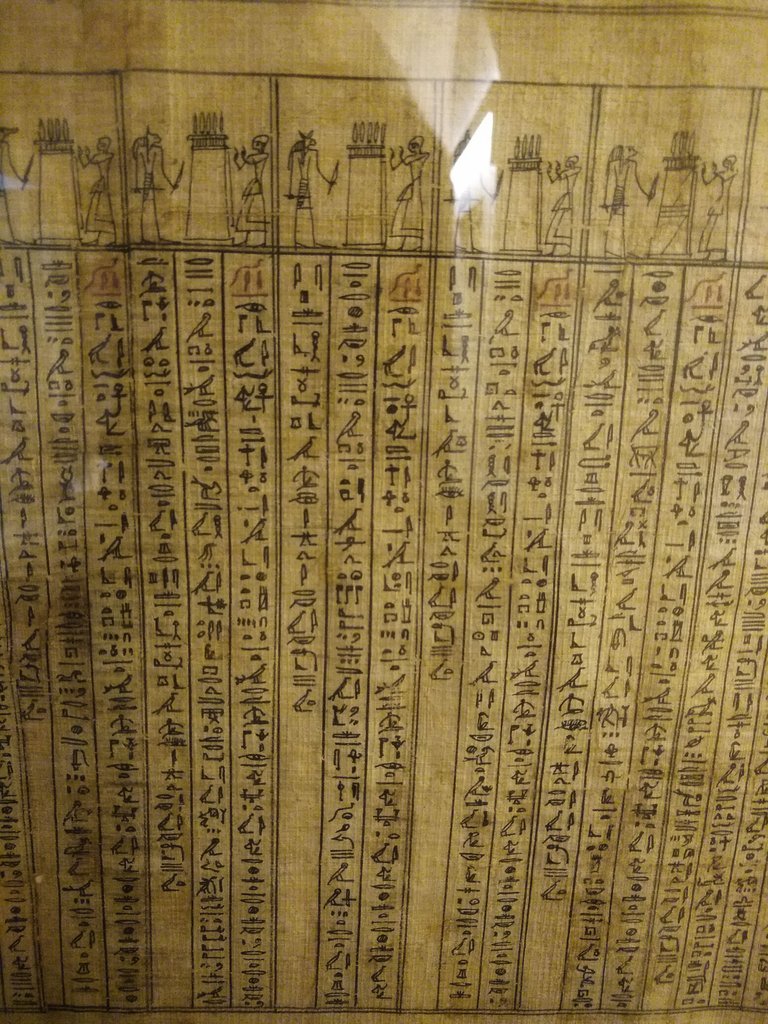
This papyrus comes from the burial of a certain luefankh. It was the case study on which a German scholar, Richard Lepsius, who led the famous Franco-Prussian Expedition in Egypt and Nubia, based his seminal study of the text for which he coined the term 'Book of the Dead'. It indicates a heterogeneous set of funerary spells which, from the New Kingdom onward, were inscribed on papyri and included with the grave goods. This kind of 'The Book of the Dead' written on the papyrus normally is very long, because it is often placed between the body's hands or the legs. It contains the magic spells which were believed to guide the deceased through the dangerous paths of the afterlife and accompany him or her during the process of rebirth. According to the study of Richard Lepsius, there are 165 different spells in 'The Book of the Dead', based on these spells and their order, he established a canon of reference that is still in use today, albeit with the addition of future spells by other scholars. For more information, you also can check in wikipedia.
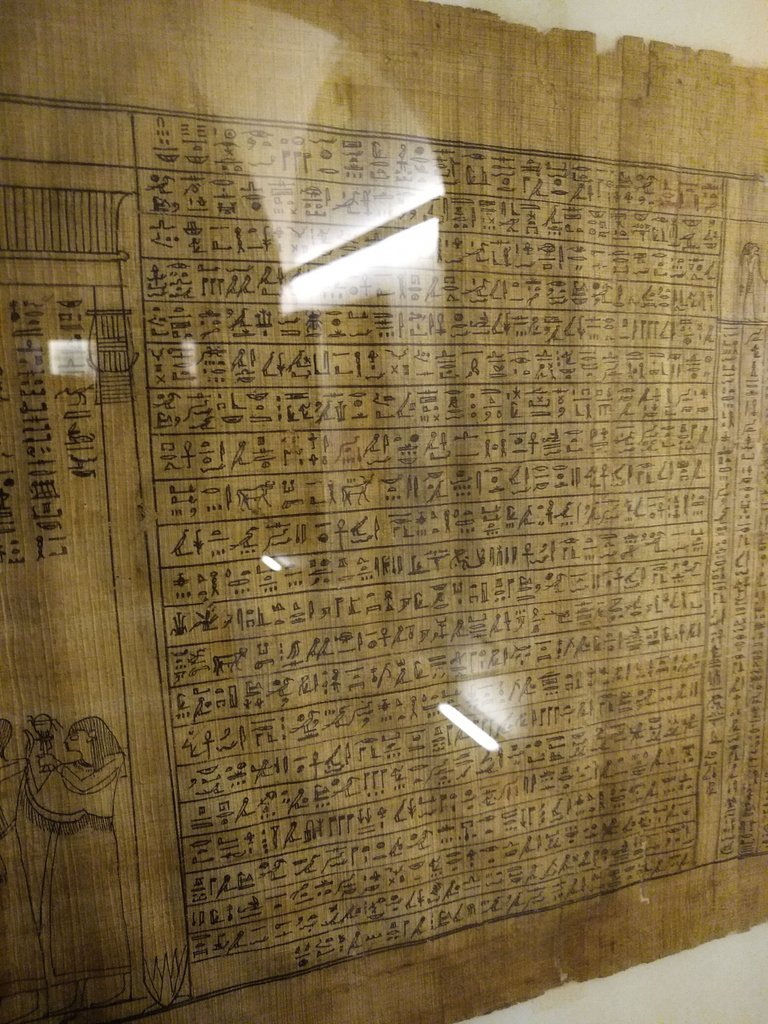
Stela of Meru
Meru was an Ancient Egyptian official under king Mentuhotep II in the Eleventh Dynasty, around 2000 BC. Meru was overseer of sealers at the royal court and therefore one of the highest state officials.
Overseer of sealers: Administrative title of a 12th Dynasty high official of the Treasury. Most containers of produce and goods were sealed when entering or leaving the Treasury. [According to the Egypt Definition]
The large colorful stela depicts an important official and his family. It can be precisely dated thanks to its indication of the year 46 of the reign of Mentuhotep II. The upper section is dedicated to Meru's father. The central part contains a funerary invocation to Osiris. Below, offering are presented to the dignitary and his mother. The figures are in bas-relief, whereas the main text is carved in sunken relief, a less labor-intensive technique.
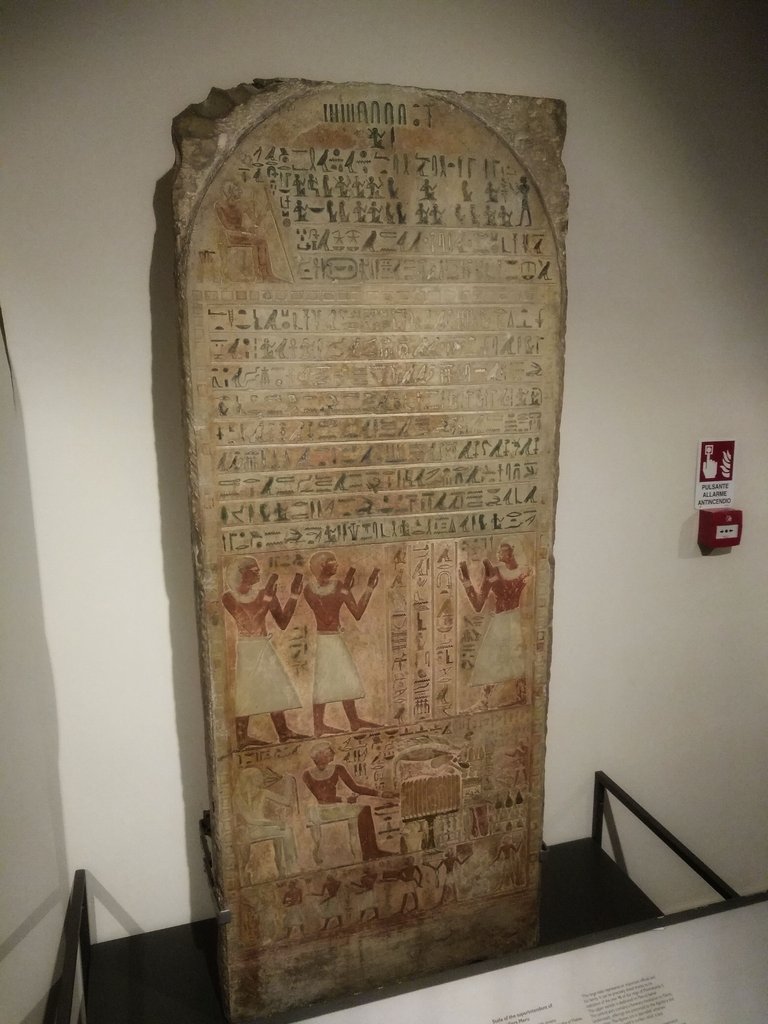
The Goddess Isis
Another antiquity in the entrance area is the goddess Isis statue. The statue, depicted standing, wears on her head the sun disk with bovine horns and holds the was sceptre of divine power in here left hand and the ankh symbol of life in her right hand. Although fragmentary and missing its lower part , the sculpture's shape and face still evoke an elegant and extraordinary femininity.
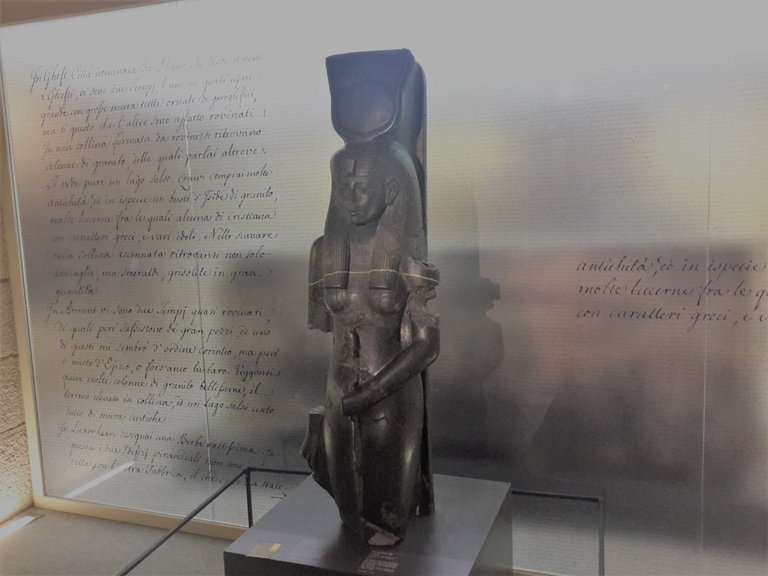
I am not the researcher of history or archaeology. Just want to share with you some beautiful antiquities. If I made some critical errors in my post, please feel free to help me correct them. In the next post, we will start to enter the Predynastic period, which is exhibited in the 2nd floor of the museum.
Thanks for your reading !
The original post belong to @victory622 Please feel free to upvote, comment and follow me @victory622
Congratulations, Your Post Has Been Added To The Steemit Worldmap!
Author link: http://steemitworldmap.com?author=victory622Post link: http://steemitworldmap.com?post=victory-s-museum-trip-ii-the-museo-egizio-of-turin-ii
Want to have your post on the map too?
The characters in the book of dead look like art drawings and much alive.
Yes, it has many different spells, looks very animated. I see some animals on it.